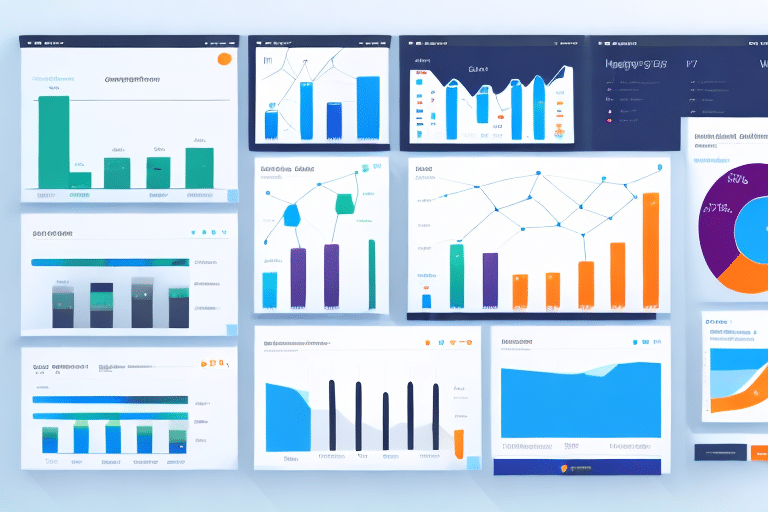What is Sales per Square Foot and Why It Matters
Sales per square foot is a critical metric used to evaluate the performance and efficiency of retail stores and warehouses. It measures the revenue generated per unit of area, providing valuable insights into how effectively a business utilizes its physical space.
Importance for Retailers
Maximizing sales per square foot is essential for retailers as it indicates the effectiveness of sales strategies within a physical location. This metric takes into account factors such as product placement, store design, and customer foot traffic.
Assessing Profitability
By analyzing sales per square foot, retailers can determine the profitability of each location. This helps identify underperforming areas, allowing businesses to address issues related to traffic, merchandising, or pricing strategies.
How to Calculate Sales per Square Foot
Calculating sales per square foot is straightforward. The formula is:
Sales per Square Foot = Total Sales ÷ Total Area (in square feet)
For example, if a store generates $500,000 in annual sales and occupies 10,000 square feet, its sales per square foot would be $50.
Industry Variations
It's important to note that sales per square foot can vary significantly across different industries and locations. A high-end boutique in a prime shopping district may achieve higher figures compared to a discount store in a less desirable area.
Benchmarking Performance
Using this metric as a benchmark allows businesses to compare performance across multiple locations, facilitating informed decisions about investments, expansions, or closures.
Analyzing and Comparing Sales per Square Foot
Sales per square foot serves as a key indicator of retail profitability and business sustainability. It enables retailers to:
- Evaluate Profitability: Identify which stores or warehouses are generating strong returns.
- Compare Performance: Assess different locations to determine best and worst performers.
- Inform Strategic Decisions: Decide where to invest, expand, or close operations based on performance metrics.
E-commerce Considerations
For e-commerce businesses, sales per square foot can be adapted by considering server space or digital footprint. However, metrics like conversion rates and customer acquisition costs may offer more relevant insights.
Factors Affecting Sales per Square Foot
Several factors influence sales per square foot, including:
Store Layout and Merchandising
The design and organization of a retail space significantly impact customer experience and sales. Effective store layout ensures easy navigation, while strategic merchandising attracts and engages customers.
Inventory Management
Optimal inventory management ensures that the right products are available at the right time, maximizing sales opportunities and minimizing excess stock. Utilizing inventory management systems can enhance accuracy and efficiency.
Leveraging Technology for Sales per Square Foot Analysis
Modern technology plays a pivotal role in tracking and analyzing sales per square foot in real-time. Retailers can utilize advanced analytics tools and software solutions to monitor performance, identify trends, and make data-driven decisions.
Real-Time Monitoring
Implementing real-time monitoring systems allows businesses to quickly respond to changes in sales dynamics, ensuring sustained performance and profitability.
Data-Driven Strategies
By analyzing data from various sources, retailers can develop strategies that optimize space utilization, enhance customer experience, and boost sales.
Best Practices and Common Pitfalls in Sales per Square Foot Analysis
To effectively utilize sales per square foot as a metric, retailers should adhere to the following best practices while avoiding common mistakes:
Best Practices
- Optimize Store Design: Create an inviting and efficient layout that encourages customer navigation and purchases.
- Implement Advanced Analytics: Use data analytics to gain insights into sales trends and customer behavior.
- Manage Inventory Effectively: Ensure accurate inventory levels to meet customer demand without overstocking.
- Invest in Technology: Adopt software solutions that facilitate real-time monitoring and analysis.
Common Mistakes to Avoid
- Inaccurate Data: Ensure that all sales and area data are accurate and up-to-date to avoid misleading conclusions.
- Inconsistent Comparisons: Avoid comparing sales per square foot across different store layouts or product categories without proper adjustments.
- Neglecting External Factors: Consider external influences such as local economic conditions and market trends when analyzing the data.
Conclusion
Understanding and optimizing sales per square foot is essential for retailers aiming to enhance business performance and profitability. By leveraging technology, implementing best practices, and avoiding common pitfalls, businesses can effectively utilize this metric to drive strategic decisions and achieve sustained growth. For further reading on retail performance metrics, visit reputable sources such as National Retail Federation or Harvard Business School.






















